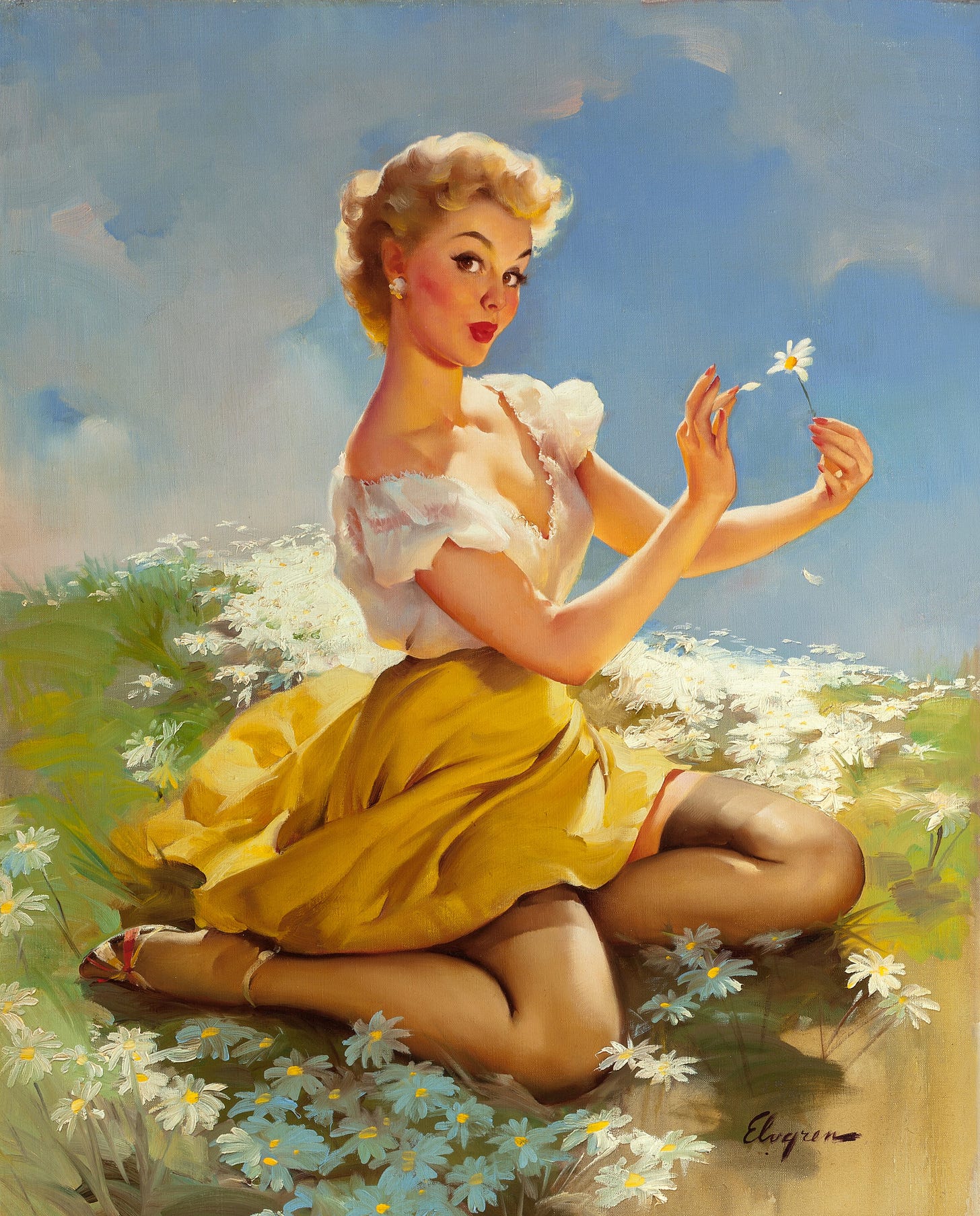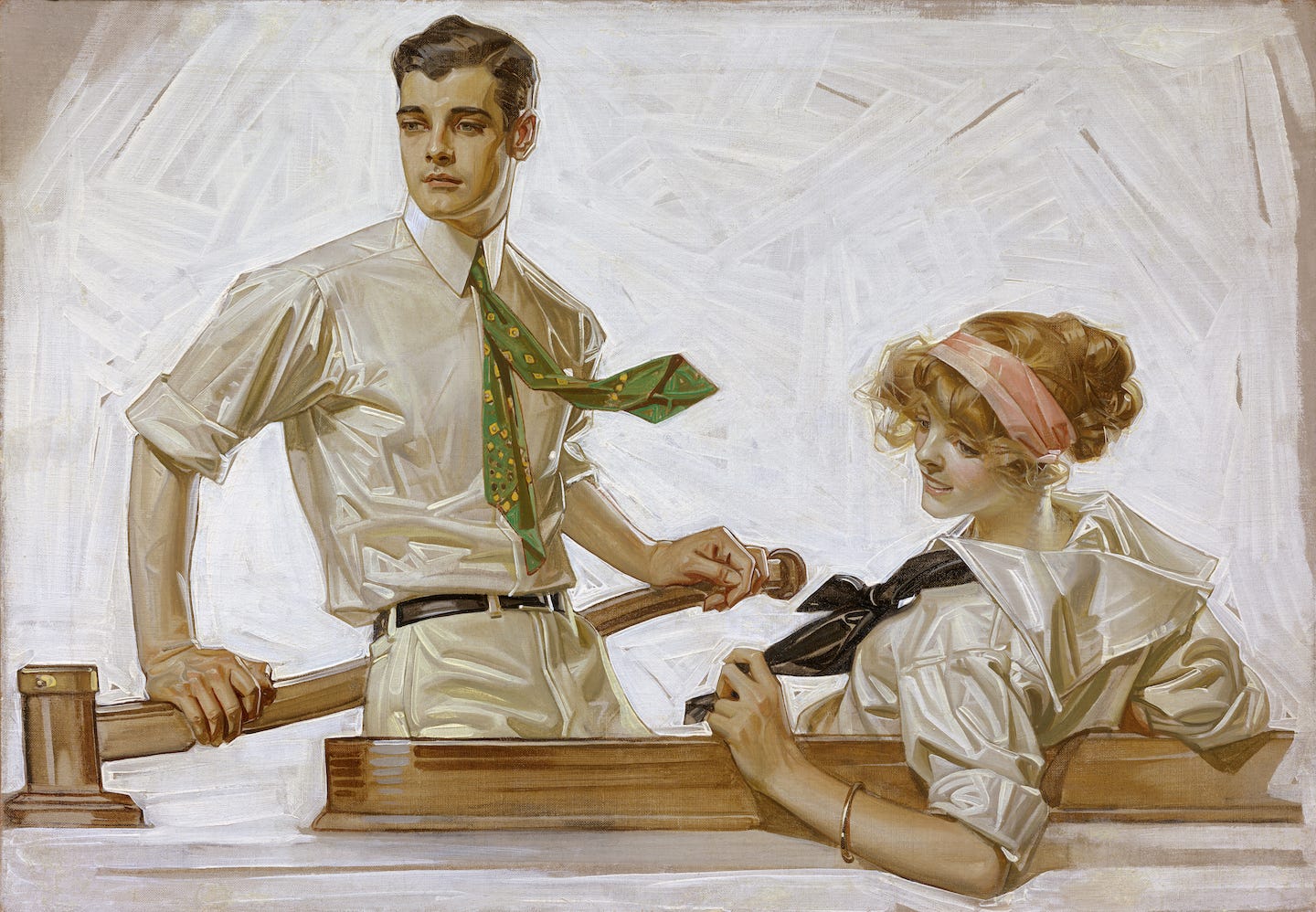How To Copy Like A Pro
And not be a jerk about it.
At some point in our creative career, we may have directly copied from another person’s work. In lieu of actually seeing someone create a drawing this was the next best thing. But there is a well-deserved stigma around it. One that I fell prey too when I copied something for an art homework assignment and was called out on in front of the class.
I should have known better, but my desire to establish myself as a good artist was stronger. Instead, it worked so poorly that I had to swing back around and redouble my efforts. Praise can be a powerful drug, and I think is the primary reason people take this route. But here’s the thing, it’s not all bad, especially as a study tool.
One of the first studies I did was of illustrator Gil Elvgren’s work. I always liked the way he painted skin. It went against my own color theory, was almost formulaic and yet was still attractive to the eye. So instead of simply copying a painting I took the calendar reference that I had and painted it upside-down. This abstracted the form and made me focus on the palette. It worked pretty well, and in the end I had a reasonable facsimile of a Gil Elvgren piece. I used that experience to create another painting right after. When you leverage what you’ve learned by putting it into practice you have a greater chance of absorbing that knowledge.
I also did a J.C. Leyendecker study. I was so attracted to his brushwork; I wanted to figure out how he was able to do it and what the right mix of medium was to get his oils to almost flow like ink.
Here’s a few of the things you’ll find when you do what I call, ‘work-study’ pieces:
You can focus more on copying the thing in front of you than figuring out structure and color schemes
If you do it enough, you’ll get a sense of what the artist was thinking in their approach
You’ll make marks differently than you’ve learned over your lifetime--your calligraphy may change
You’ll basically absorb the knowledge of “how” the artist put their medium on a substrate and some small insight of the “why”
Students of classical atelier training in Europe have for centuries gone to museums and painted copies of famous paintings. It was just another arm of learning. While finding a master artist to study with is hard these days, there are other ways of going about it. Most American museums don’t allow any such copying (except in graphite on a smallish scale). I can only speculate to the reasons why. For now, painting from beautifully reproduced calendars, personal photos of the actual works and better still, hi-res photos taken by many of the world museums online, you’ll have a lot to choose from. Though part of the problem with this is knowing the size of the piece. It can change your approach some, so keep that in mind.
The elephant in the room is simple: Copying is a about STUDYING and nothing more. Don’t do what I did at the ripe old age of 12. Even copying photographs of famous people as a portfolio piece, does not do you any favors. If you’re going to do that, do something more. Make a composition out of it. Compose elements that make a statement--be an artist if that’s what you truly are. Otherwise, you just come off as a con artist...and the world has enough of those.
🔸 If you’re enjoying our Substack and all of the content we produce for you for free, yet don’t have the budget to become a paid subscriber, please consider a “One Time Donation” which would be greatly appreciated. Thank you.
=s=





